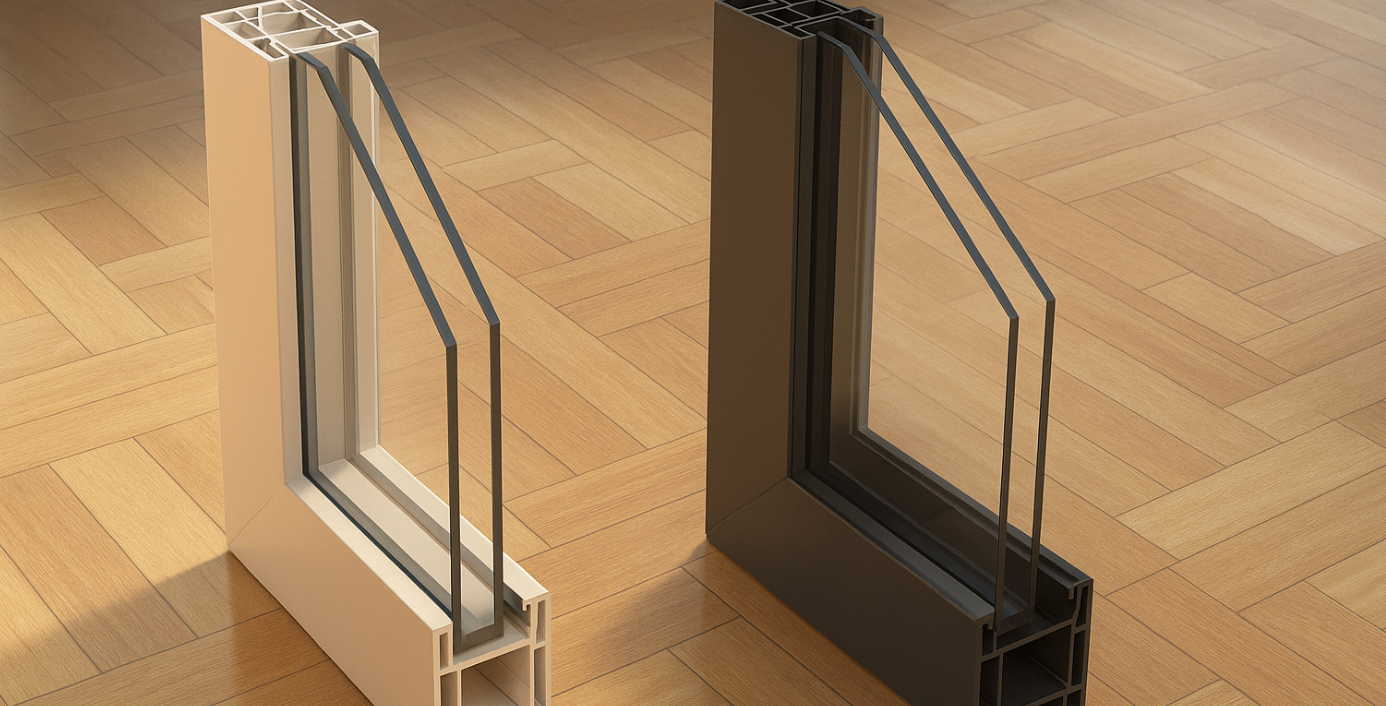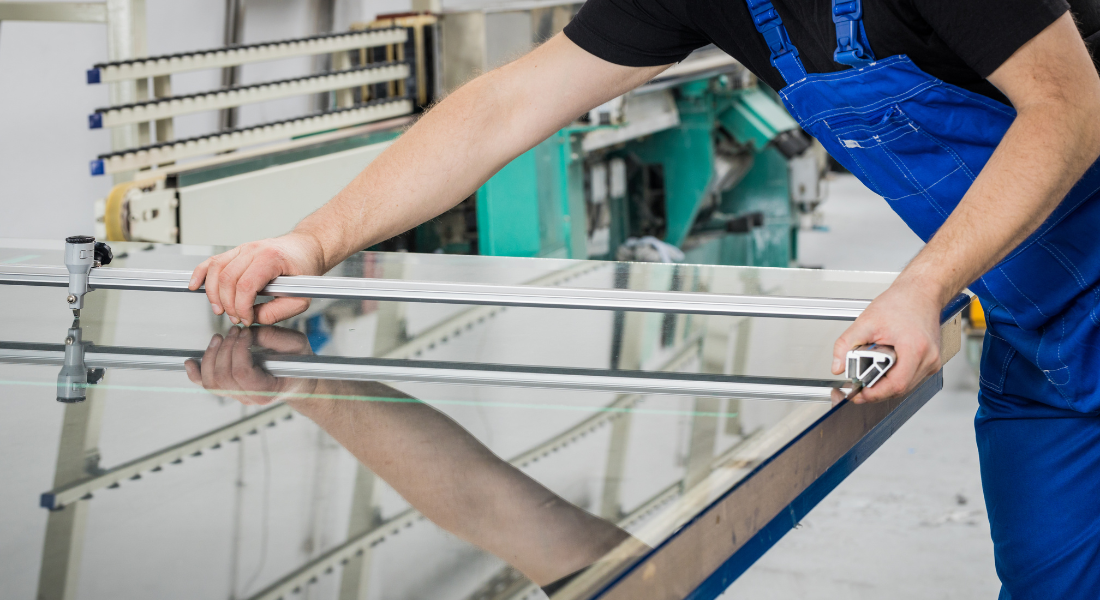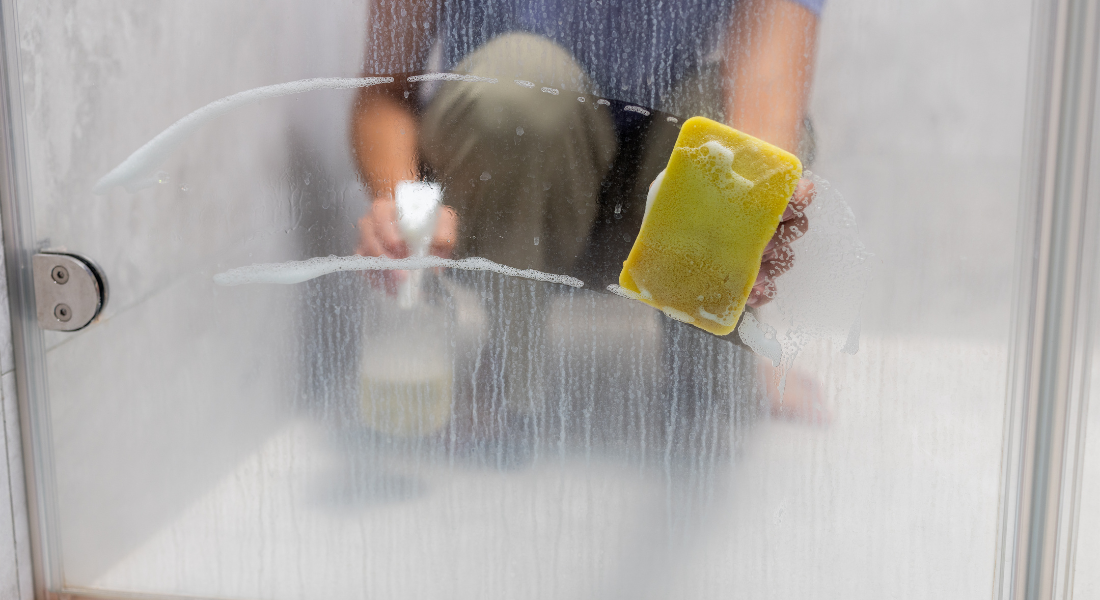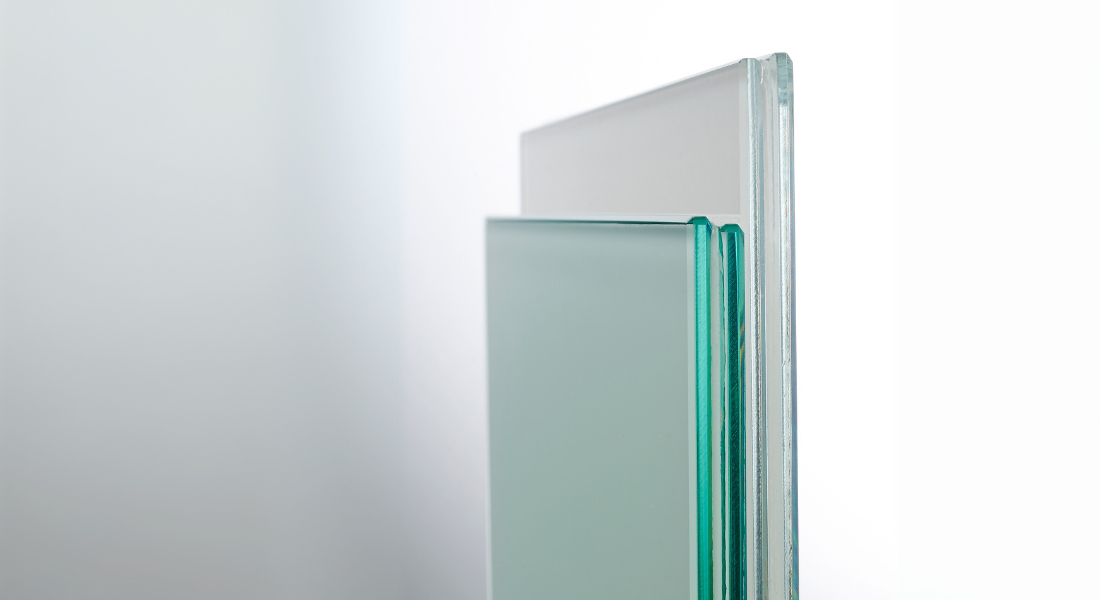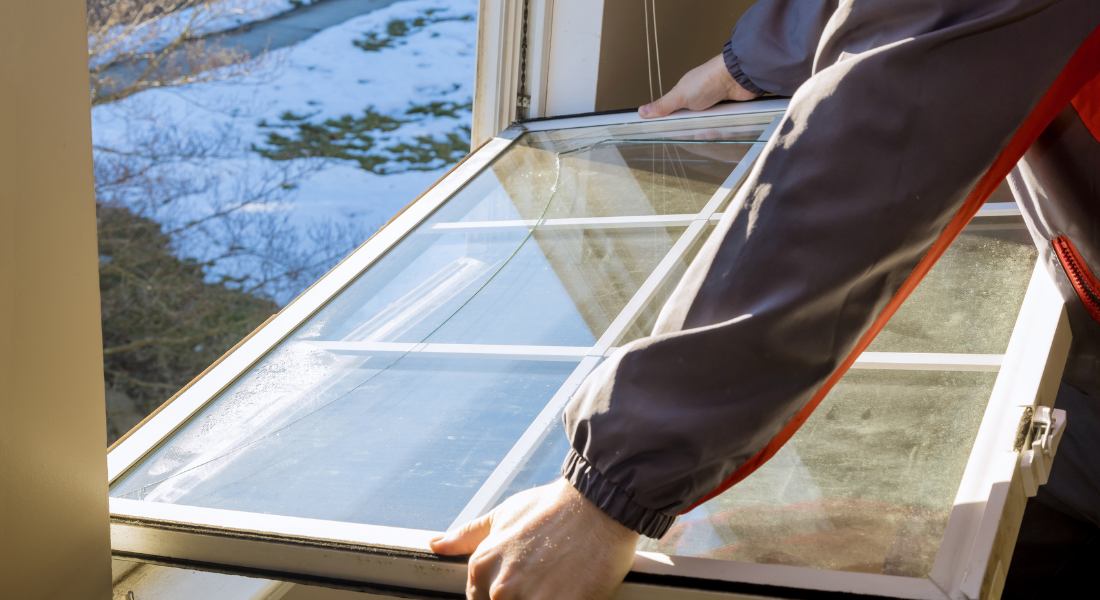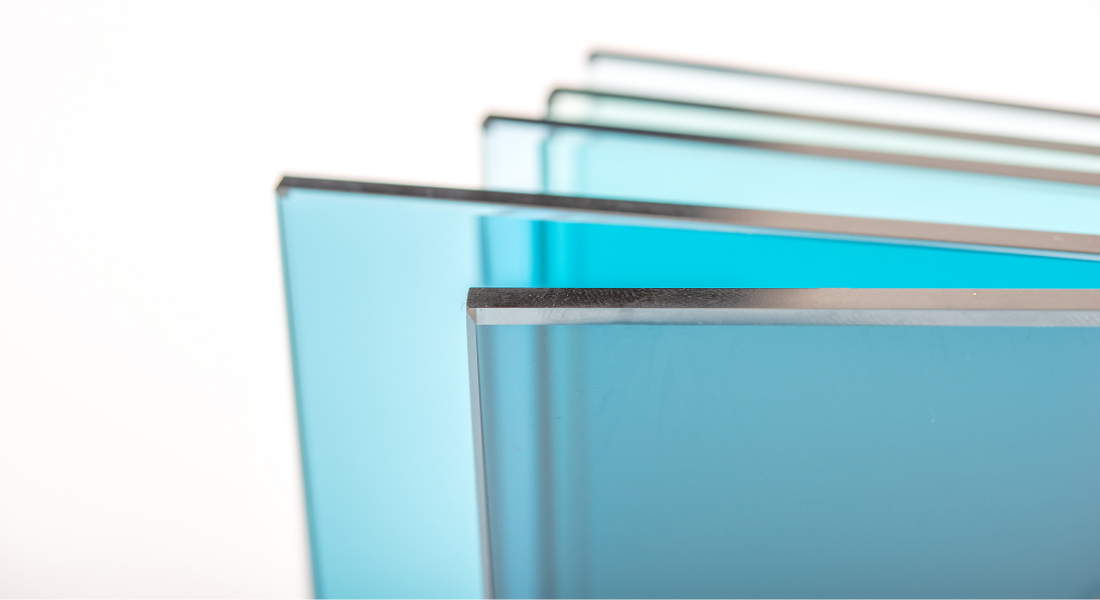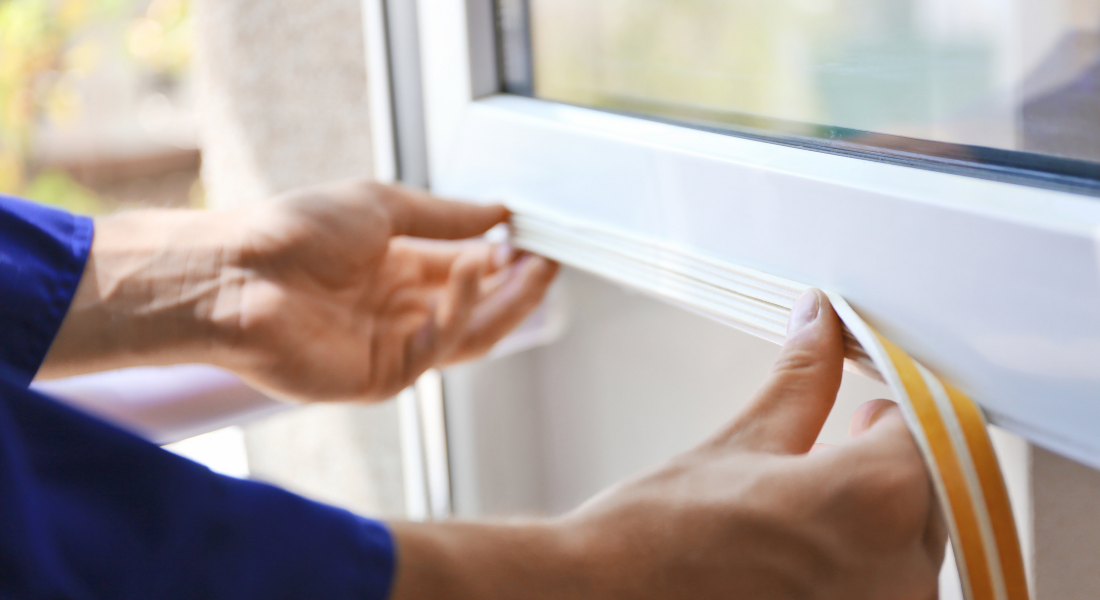How to Tell If the Glass You're Buying Is Truly Tempered
Are you about to buy a tempered glass but not sure if it's really "tempered?
Many people ask themselves the same questions:
- Is this really tempered glass?
- How can I be sure it’s 'original' and high-quality tempered glass?
- Am I choosing the right glass type for my needs?
Well, these questions are understandable, especially if you're investing in glass for your home or office.
But let’s walk through how to easily identify tempered glass and know that it's 'real'.
Why Is Tempered Glass So Popular?
Tempered glass is a smarter, safer alternative to regular glass. Here's why:
- Strength: Tempered glass is up to five times stronger than standard glass.
- Safety: If it does break, it shatters into small, blunt pieces rather than sharp, dangerous shards.
- Durability: It stands up to pressure, heat, and impact better than traditional glass.
These characteristics make it popular for:
- Windows and doors
- Shower enclosures
- Glass railings and partitions
- Screen protectors
- Vehicle windows
- Heat-resistant cookware
- Glass furniture
- Stairways and escalator panels
How Can You Tell If the Glass Is Tempered?
Here is how professionals check to confirm if the glass is actually tempered:
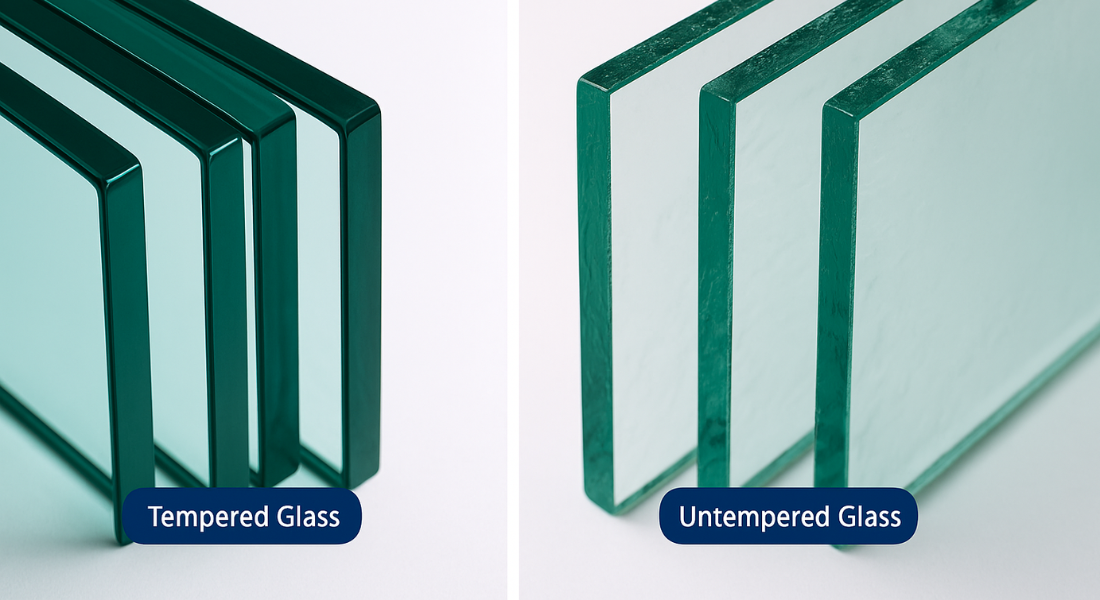
1. Check the Edges
Tempered glass usually has smooth, polished edges. So, run your fingers along the edge of the glass:
If it feels Smooth and finished, it's most likely tempered. But if it's rough or jagged, it's probably not tempered.
2. Look for Distortions
Tempered glass can show minor imperfections, such as slight bending or surface distortions.
This is a side effect of the tempering process, and if you see it, then that's a good sign.
3. Use Polarized Glasses
If you have polarized sunglasses or lenses, you can see patterns that are not visible to the naked eye.
The patterns you are looking for are:
- Shady lines
- Dark spots or bands
These optical effects are unique only to tempered glass.
4. Find the Stamp
This is the easiest way to check if the glass is actually tempered.
Tempered glass almost always comes with a stamp or etched mark from the manufacturer. It’s usually located in one of the corners and may include terms like:
- "Tempered"
- "Safety Glass"
- A certification or the manufacturer's name
If you don’t see a stamp, that’s a red flag.
Trust Allnite Glass for High-Quality Tempered Glass
If you're looking for genuine tempered glass, Allnite Glass in Clarksville, TN, is here to help.
As a trusted glass manufacturer, we specialize in providing high-quality tempered glass for residential, commercial, and custom projects.
Call us today for a free quote—we’ll make sure you get exactly what you need, with the quality and service you deserve.
Quick Recap: How to Spot Tempered Glass
- Smooth edges
- Minor surface distortions
- Patterns when viewed through polarized lenses
- Manufacturer’s stamp or marking
Do you know how to choose safety glass or tempered glass? These 2 options sound similar ,but there are some important differences. Read our other blog here: Safety Glass vs Tempered Glass: How To Choose.
FAQs
Q. How do you tell if glass is tempered or not?
A. There are a few simple ways to check if glass is tempered:
- Look for a stamp: Tempered glass usually has a small stamp or etched logo in one corner. It might say "Tempered" or "Safety Glass."
- Feel the edges: Tempered glass usually has smooth, polished edges. Regular glass often has sharper, rougher edges.
- Check for distortions: If you look closely, tempered glass sometimes has small distortions or a slightly wavy look because of the heating process.
- Use polarized sunglasses: When you look at tempered glass through polarized lenses, you’ll often see dark lines or spots that aren't visible otherwise.
- Tap it gently: Tempered glass usually makes a slightly different sound when tapped—a tighter, higher-pitched "ting" compared to regular glass.
Q. How to tell the difference between tempered glass and plastic?
A. Tempered glass and plastic can look similar, but they behave differently:
- Feel: Glass feels cooler and harder, while plastic feels lighter and sometimes warmer to the touch.
- Sound: Tap on the material. Glass gives off a sharp, clear sound. Plastic makes a duller, softer sound.
- Flexibility: Plastic can bend a little without breaking. Glass, especially tempered glass, will not flex—it either stays solid or breaks.
- Scratch test: Glass is much harder to scratch than plastic. Use something like a key (gently!)—plastic will scratch easily, glass will not.
- Weight: Glass is heavier than plastic. If you can pick it up and it feels too light, it might be plastic.
Q. Does tempered glass have to be stamped?
A. Yes, in most cases, tempered glass must be stamped. Building codes often require tempered glass to have a small, permanent label showing it meets safety standards. This stamp (called a "bug") usually includes:
- The word "Tempered"
- Manufacturer’s name or logo
- Certification information (like ANSI or other safety codes)
However, in some custom projects where appearance is critical (like decorative glass), the stamp might be omitted—but only if allowed by local codes. Always double-check if the law in your area requires it.
Q. What is the symbol for tempered glass?
A. Tempered glass doesn’t have a "universal symbol" like a logo, but it does usually have a stamp (called a "bug") that includes words like:
- "Tempered"
- "Safety Glass"
- Sometimes a certification mark like "ANSI Z97.1" (an American safety standard)
The stamp is often small, etched into one corner of the glass. It’s not super flashy, but it’s very important for identifying the glass.
Q. How to tell if tempered glass is cracked?
A. Tempered glass usually shatters in a special way when it cracks:
- Instead of forming sharp, long cracks like normal glass, it breaks into lots of small, blunt pieces.
- If only a part of it is cracked, you’ll still notice a "spiderweb" pattern that looks different from a crack in regular glass.
- The broken area will not have dangerous, sharp shards—it will look more like broken ice or rock candy.
If you see this kind of break, it’s a strong sign that the glass is tempered.
Q. How to tell if glass is tempered in an aquarium?
A. To check if the glass in an aquarium is tempered:
- Look for a manufacturer stamp: Some aquariums have tempered bottoms or sides, and they may be stamped.
- Polarized sunglasses test: Put on polarized glasses and look at the glass under good lighting. If you see patterns like dark lines, streaks, or spots, the glass is likely tempered.
- Ask the manufacturer: If you can’t find any obvious signs, it’s a good idea to check the brand’s website or call them. Many aquariums use tempered glass on the bottom but regular glass for the sides.
Important Tip: Never drill into glass unless you are absolutely sure it’s not tempered. Tempered glass will shatter completely if drilled or cut.

